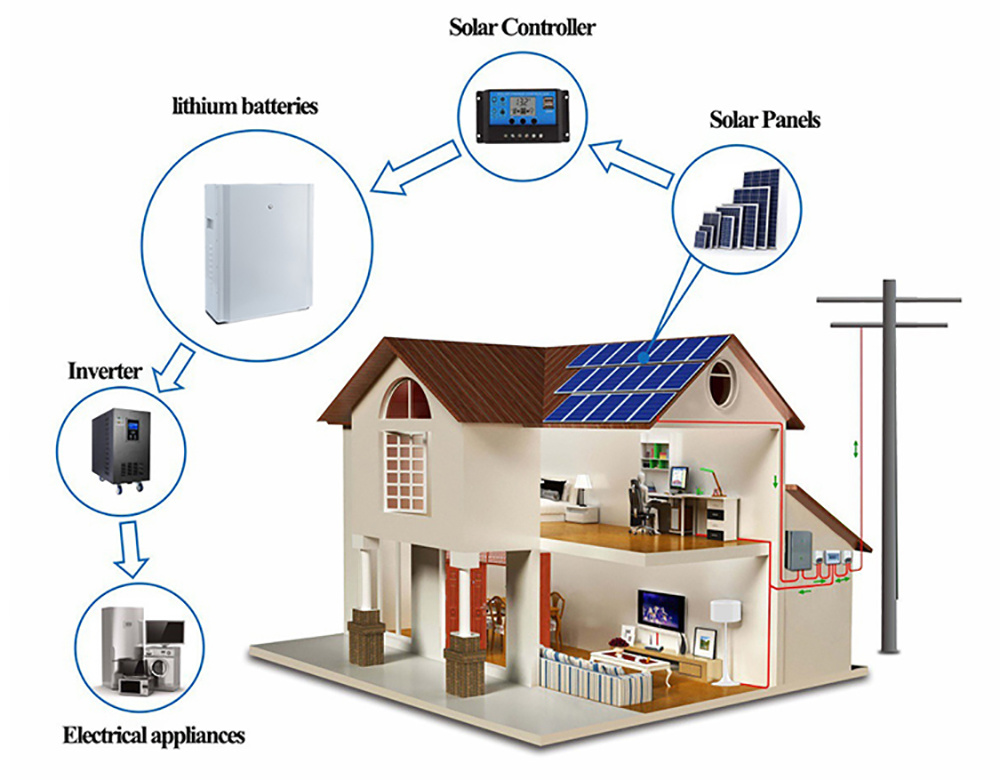African Solar Energy Industry Association show that the African solar energy industry is ushering in a period of accelerated development. In the last two months alone, many African countries have announced a total of nearly 2 gigawatts of large and medium-sized solar power plant projects, of which 18 countries are planning the construction of solar energy-related industrial infrastructure including power plant energy storage during the same period. It is worth noting that some African countries have begun to try to use more advanced solar energy industry technology to keep up with the rapid development of global clean energy.
, as the first country on the African continent to achieve more than 1 gigawatt of solar power, South Africa signed another large solar order last month. A Norwegian renewable energy developer won the bid for two projects of South Africa’s Ministry of Energy-a solar power project with an installed capacity of 540 megawatts and a battery energy storage project with an installed capacity of 1.14 gigawatts. During the 20-year agreement period, the two projects will provide dispatchable power to the South African power grid between 5 am and 9.30 pm every day. The conclusion of this agreement is considered to be a large-scale non-carbonized industry tender conducted by the South African government to solve the long-term power shortage problem, which has attracted great attention from the industry.
among the African countries where the solar energy industry has accelerated in recent years, Zambia has joined the leading ranks of various types of photovoltaic power generation. At the end of July, China Water Resources and Hydropower Construction Co., Ltd. won the bid for the civil engineering part of Zambia’s concentrated solar power generation project. The power station will use a large number of mirrors to gather the energy of sunlight into the heat transfer medium, and transfer the heat energy to the inlet steam of the steam turbine through the heat exchange device, resulting in 200 megawatts of power generation. In 2019, the electricity price of solar energy in Zambia fell to the lowest level in the history of sub Saharan African countries, at less than US $40 per megawatt hour, which also promoted the further expansion of the industry. At present, the scale of solar photovoltaic power generation projects under construction in Zambia is close to 500 MW.
the attention of the African Solar Energy Industry Association also include projects in Togo, the Democratic Republic of the Congo, Tanzania and Namibia. Even in Sao Tome and Principe, a small island country in West Africa, a 550 kW small solar power station is being built.
According to the African solar energy market report released at the International Solar Energy Exhibition in Munich, Germany last year, the African solar energy industry has great potential for development. Although the current production capacity of solar power plants in Africa only accounts for 1% of the total global production capacity, if the development speed of the solar energy industry in Africa keeps pace with the pace of other parts of the world, the installed photovoltaic capacity of the African continent will reach 170 GW by 2030. Judging from the figures in the past three years, the fastest growing regions of photovoltaic power generation in the world are Europe, the Middle East and Africa, especially in sub-Saharan Africa. Global financial investment in photovoltaic power generation has boosted the development of related industries. According to the European Solar Energy Industry Association, the installed capacity of the solar energy market in sub-Saharan Africa will increase significantly between 2020 and 2024, with a conservative estimate of 21 gigawatts of power generation.
African Carbon Exchange, said in an interview with the media that most African countries are in a critical period of energy transformation, and there is a huge gap in industrial electricity. At the same time, about half of the African population does not have access to electricity. Solar energy with relatively low cost and scalability is an important solution to speed up this process. Douglas stressed that Africa has a vast territory and uneven regional development, but the relatively consistent feature is that it is rich in sunshine resources and can absorb investment in the solar energy industry of various types, scales and technical characteristics. Africa is expected to become a key area for the rapid development of the global solar energy industry. (Reporter Zou Song)

